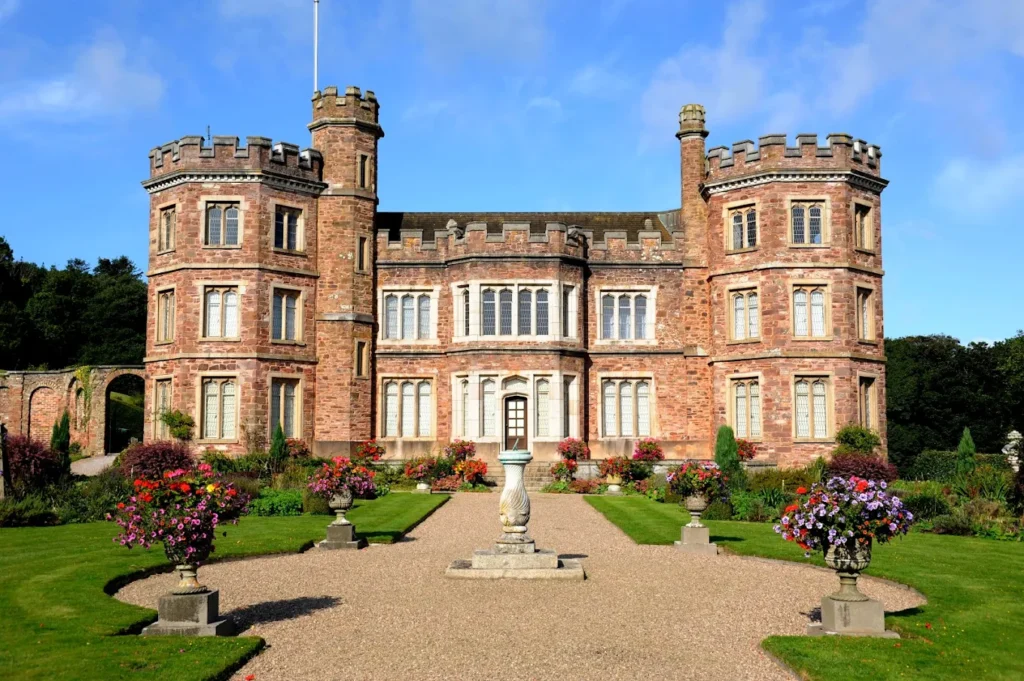
Project Summary
Plymouth City Council commissioned an options appraisal report for Mount Edgecumbe to look at how to decarbonise the site.
Background
Mount Edgecumbe House & Country Park is jointly owned by Plymouth City Council and Cornwall Council, managed through a Joint Committee. The Park is one of only two Grade I listed designed landscapes in Cornwall, spanning 205 hectares, and includes over 50 listed buildings and five Scheduled Ancient Monuments. The core focus of this project was to address the estate’s present oil fired-heating infrastructure, particularly in Mount Edgcumbe House and the Barrow Centre, both Grade II listed buildings. The heating in these buildings is provided by two 134kW oil-fired boilers located in the main house, which are costly to maintain, inefficient, and near the end of their service life.
Our Role
The project was awarded a grant by the South West Net Zero Hub as part of our Local Net Zero Fund to partly fund the work completed. We also acted as a critical friend – providing guidance on defining the scope, reviewing technical documents, and advice to the project team.
Location
Mount Edgecumbe House and Country Park, Cremyll, Torpoint PL10 1HZ
Results and outcomes
- Carried out an Options Appraisal process to provide a pathway to decarbonising The Barrow Centre and Mount Edgcumbe House. The process produced a report which has enabled both councils and project stakeholders to clearly understand the available low-carbon heating options, the technical challenges posed by the estate’s historic structures, and the financial implications of each route.
- Installed a LoRaWan sensor network to collect ongoing data of temperature, humidity, and electricity usage. This has provided high-quality environmental data that can inform future conservation and heating system decisions.
- Commissioned DEC and EPC assessments.
- Installed a UV-protective secondary glazing unit as a demonstrator project within a heritage context.
- Engaged Historic England in constructive discussions about renewable energy integration within a sensitive heritage context.
- Laid the groundwork for transitioning away from fossil fuels by enabling a shift toward data-driven energy management and renewable heating strategies within the ISO50001 framework.
- Developed public communication tools such as leaflets to engage the community and visitors to the estate.
Challenges
An unexpected fire at the Barrow Centre in February 2025, damaged two rental units and two accommodation spaces. While there were no injuries, the fire caused significant disruption to site operations. Both Plymouth and Cornwall Councils are progressing an insurance response and a longer-term rebuilding options appraisal, which may take several months to complete. However, the incident has become a catalyst for deeper structural redesign and sustainability planning.
Another key challenge has been working within the limitations of a highly protected historic environment. The need to protect the Grade 1 landscape, fabric and appearance while also addressing urgent infrastructure needs required detailed negotiations and consultation, particularly with Historic England.
The Plymouth City Council team addressed these risks through early and consistent engagement, robust reporting through the Options Appraisal, and through the joint leadership of the working group of the two councils established during the lifetime of the project.
Lessons Learned
This project highlighted the complexities of delivering low-carbon upgrades within a Grade I landscape and Grade II buildings. It reinforced the importance of early consultation with stakeholders like Historic England and showed that substantial lead times are essential for navigating heritage and planning considerations. Additionally, it demonstrated that unforeseen setbacks, like the fire, can become catalysts for innovation and a broader thinking strategic approach.
The team also learned the value of demonstrator installations, such as the secondary glazing, which provided a practical case study for energy-saving measures that are sympathetic to the site’s historic character. Furthermore, robust monitoring platforms like LoRaWan are essential tools for evidence-based evaluation, planning and monitoring for heritage management.
Next Steps
LoRaWan sensor network will remain operational, providing ongoing insights into the building environment and energy usage, which will support longer-term maintenance and conservation efforts.
In parallel, both councils are planning funding applications —likely through the National Lottery or Arts Council—to finance solar panel installations and renewable heating technologies. These systems will not only reduce carbon emissions but also provide greater energy security and potentially reduce running costs.
Opportunities to reconfigure internal layouts in the Barrow Centre are being explored to enhance rental flexibility and integrate modern energy infrastructure.
Another route forward will be to address the heating solutions for the Barrow Centre in the first instance and then to complete works within the House. The team will also look at securing solar installations across all approved areas on the country park estate to meet energy demands.
If you work within a public sector organisation and would like a copy of the reports produced, please contact swnetzerohub@westofengland-ca.gov.uk


